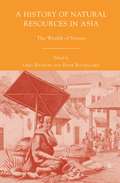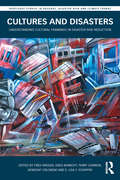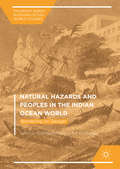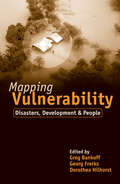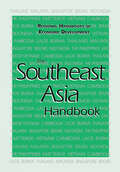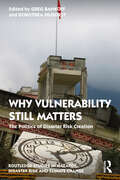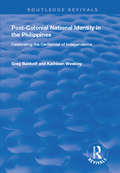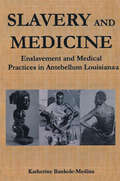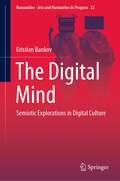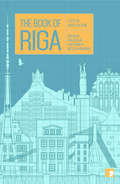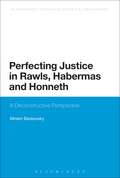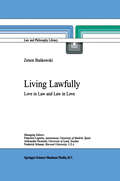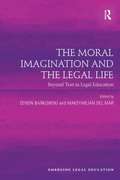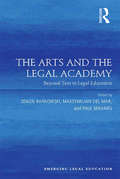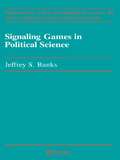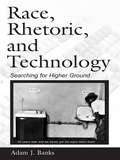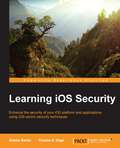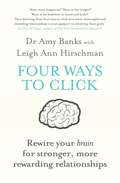- Table View
- List View
A History of Natural Resources in Asia: The Wealth of Nature
by G. Bankoff P. BoomgaardMuch has been written about the wealth of nations, the history of unequal distribution and zones of affluence and deprivation within and between societies. This book explores why some Asian nations are more prosperous than others through an examination of how their interaction with and utilization of resources has changed over the centuries.
Cultures and Disasters: Understanding Cultural Framings in Disaster Risk Reduction (Routledge Studies in Hazards, Disaster Risk and Climate Change)
by Greg Bankoff Terry Cannon Fred Krüger Benedikt Orlowski E. Lisa SchipperWhy did the people of the Zambesi Delta affected by severe flooding return early to their homes or even choose to not evacuate? How is the forced resettlement of small-scale farmers living along the foothills of an active volcano on the Philippines impacting on their day-to-day livelihood routines? Making sense of such questions and observations is only possible by understanding how the decision-making of societies at risk is embedded in culture, and how intervention measures acknowledge, or neglect, cultural settings. The social construction of risk is being given increasing priority in understand how people experience and prioritize hazards in their own lives and how vulnerability can be reduced, and resilience increased, at a local level. Culture and Disasters adopts an interdisciplinary approach to explore this cultural dimension of disaster, with contributions from leading international experts within the field. Section I provides discussion of theoretical considerations and practical research to better understand the important of culture in hazards and disasters. Culture can be interpreted widely with many different perspectives; this enables us to critically consider the cultural boundedness of research itself, as well as the complexities of incorporating various interpretations into DRR. If culture is omitted, related issues of adaptation, coping, intervention, knowledge and power relations cannot be fully grasped. Section II explores what aspects of culture shape resilience? How have people operationalized culture in every day life to establish DRR practice? What constitutes a resilient culture and what role does culture play in a society’s decision making? It is natural for people to seek refuge in tried and trust methods of disaster mitigation, however, culture and belief systems are constantly evolving. How these coping strategies can be introduced into DRR therefore poses a challenging question. Finally, Section III examines the effectiveness of key scientific frameworks for understanding the role of culture in disaster risk reduction and management. DRR includes a range of norms and breaking these through an understanding of cultural will challenge established theoretical and empirical frameworks.
Cultures and Disasters: Understanding Cultural Framings in Disaster Risk Reduction (Routledge Studies in Hazards, Disaster Risk and Climate Change)
by Greg Bankoff Terry Cannon Fred Krüger Benedikt Orlowski E. Lisa SchipperWhy did the people of the Zambesi Delta affected by severe flooding return early to their homes or even choose to not evacuate? How is the forced resettlement of small-scale farmers living along the foothills of an active volcano on the Philippines impacting on their day-to-day livelihood routines? Making sense of such questions and observations is only possible by understanding how the decision-making of societies at risk is embedded in culture, and how intervention measures acknowledge, or neglect, cultural settings. The social construction of risk is being given increasing priority in understand how people experience and prioritize hazards in their own lives and how vulnerability can be reduced, and resilience increased, at a local level. Culture and Disasters adopts an interdisciplinary approach to explore this cultural dimension of disaster, with contributions from leading international experts within the field. Section I provides discussion of theoretical considerations and practical research to better understand the important of culture in hazards and disasters. Culture can be interpreted widely with many different perspectives; this enables us to critically consider the cultural boundedness of research itself, as well as the complexities of incorporating various interpretations into DRR. If culture is omitted, related issues of adaptation, coping, intervention, knowledge and power relations cannot be fully grasped. Section II explores what aspects of culture shape resilience? How have people operationalized culture in every day life to establish DRR practice? What constitutes a resilient culture and what role does culture play in a society’s decision making? It is natural for people to seek refuge in tried and trust methods of disaster mitigation, however, culture and belief systems are constantly evolving. How these coping strategies can be introduced into DRR therefore poses a challenging question. Finally, Section III examines the effectiveness of key scientific frameworks for understanding the role of culture in disaster risk reduction and management. DRR includes a range of norms and breaking these through an understanding of cultural will challenge established theoretical and empirical frameworks.
Natural Hazards and Peoples in the Indian Ocean World: Bordering on Danger (Palgrave Series in Indian Ocean World Studies)
by Greg Bankoff Joseph ChristensenThis book examines the dangers and the patterns of adaptation that emerge through exposure to risk on a daily basis. By addressing the influence of environmental factors in Indian Ocean World history, the collection reaches across the boundaries of the natural and social sciences, presenting case-studies that deal with a diverse range of natural hazards – fire in Madagascar, drought in India, cyclones and typhoons in Oman, Australia and the Philippines, climatic variability, storms and flood in Vietnam and the Philippines, and volcanic eruptions, earthquakes and tsunamis in Indonesia. These chapters, written by leading international historians, respond to a growing need to understand the ways in which natural hazards shape social, economic and political development of the Indian Ocean World, a region of the globe that is highly susceptible to the impacts of seismic activity, extreme weather, and climate change.
Mapping Vulnerability: "Disasters, Development and People"
by Greg Bankoff Georg FrerksRaging floods, massive storms and cataclysmic earthquakes: every year up to 340 million people are affected by these and other disasters, which cause loss of life and damage to personal property, agriculture, and infrastructure. So what can be done? The key to understanding the causes of disasters and mitigating their impacts is the concept of 'vulnerability'. Mapping Vulnerability analyses 'vulnerability' as a concept central to the way we understand disasters and their magnitude and impact. Written and edited by a distinguished group of disaster scholars and practitioners, this book is a counterbalance to those technocratic approaches that limit themselves to simply looking at disasters as natural phenomena. Through the notion of vulnerability, the authors stress the importance of social processes and human-environmental interactions as causal agents in the making of disasters. They critically examine what renders communities unsafe - a condition, they argue, that depends primarily on the relative position of advantage or disadvantage that a particular group occupies within a society's social order. The book also looks at vulnerability in terms of its relationship to development and its impact on policy and people's lives, through consideration of selected case studies drawn from Africa, Asia and Latin America. Mapping Vulnerability is essential reading for academics, students, policymakers and practitioners in disaster studies, geography, development studies, economics, environmental studies and sociology.
Mapping Vulnerability: "Disasters, Development and People"
by Greg Bankoff Georg FrerksRaging floods, massive storms and cataclysmic earthquakes: every year up to 340 million people are affected by these and other disasters, which cause loss of life and damage to personal property, agriculture, and infrastructure. So what can be done? The key to understanding the causes of disasters and mitigating their impacts is the concept of 'vulnerability'. Mapping Vulnerability analyses 'vulnerability' as a concept central to the way we understand disasters and their magnitude and impact. Written and edited by a distinguished group of disaster scholars and practitioners, this book is a counterbalance to those technocratic approaches that limit themselves to simply looking at disasters as natural phenomena. Through the notion of vulnerability, the authors stress the importance of social processes and human-environmental interactions as causal agents in the making of disasters. They critically examine what renders communities unsafe - a condition, they argue, that depends primarily on the relative position of advantage or disadvantage that a particular group occupies within a society's social order. The book also looks at vulnerability in terms of its relationship to development and its impact on policy and people's lives, through consideration of selected case studies drawn from Africa, Asia and Latin America. Mapping Vulnerability is essential reading for academics, students, policymakers and practitioners in disaster studies, geography, development studies, economics, environmental studies and sociology.
The Southeast Asia Handbook (Regional Handbooks of Economic Development #Vol. 3)
by Greg Bankoff Michael Haas Patrick Heenan Monique LamontagneThe Regional Handbooks of Economic Development series provides accessible overviews of countries within their larger domestic and international contexts, focusing on the relations among regions as they meet the challenges of the twenty first century.The series allows the non-specialist student to explore a wide range of complex factors-social and political as well as economic-that affect the growth of developing regions in Asia, Europe, and South America. Each Handbook provides an overview chapter discussing the region's economic conditions within an historical and political context, as well as 20 or more chapter-length essays written by recognized experts, which analyze the key issues affecting a region's economy: its population, natural resources, foreign trade, labor problems, and economic inequalities, and other vital factors.In addition, the volumes offer useful support materials, including a series of appendices that include a detailed chronology of events in the region, a glossary of terms, biographical entries on key personalities, an annotated bibliography of further reading, and a comprehensive analytical index.
Why Vulnerability Still Matters: The Politics of Disaster Risk Creation (Routledge Studies in Hazards, Disaster Risk and Climate Change)
by Greg Bankoff Dorothea HilhorstWe think vulnerability still matters when considering how people are put at risk from hazards and this book shows why in a series of thematic chapters and case studies written by eminent disaster studies scholars that deal with the politics of disaster risk creation: precarity, conflict, and climate change. The chapters highlight different aspects of vulnerability and disaster risk creation, placing the stress rightly on what causes disasters and explaining the politics of how they are created through a combination of human interference with natural processes, the social production of vulnerability, and the neglect of response capacities. Importantly, too, the book provides a platform for many of those most prominently involved in launching disaster studies as a social discipline to reflect on developments over the past 50 years and to comment on current trends. The interdisciplinary and historical perspective that this book provides will appeal to scholars and practitioners at both the national and international level seeking to study, develop, and support effective social protection strategies to prevent or mitigate the effects of hazards on vulnerable populations. It will also prove an invaluable reference work for students and all those interested in the future safety of the world we live in.
Why Vulnerability Still Matters: The Politics of Disaster Risk Creation (Routledge Studies in Hazards, Disaster Risk and Climate Change)
by Greg Bankoff Dorothea HilhorstWe think vulnerability still matters when considering how people are put at risk from hazards and this book shows why in a series of thematic chapters and case studies written by eminent disaster studies scholars that deal with the politics of disaster risk creation: precarity, conflict, and climate change. The chapters highlight different aspects of vulnerability and disaster risk creation, placing the stress rightly on what causes disasters and explaining the politics of how they are created through a combination of human interference with natural processes, the social production of vulnerability, and the neglect of response capacities. Importantly, too, the book provides a platform for many of those most prominently involved in launching disaster studies as a social discipline to reflect on developments over the past 50 years and to comment on current trends. The interdisciplinary and historical perspective that this book provides will appeal to scholars and practitioners at both the national and international level seeking to study, develop, and support effective social protection strategies to prevent or mitigate the effects of hazards on vulnerable populations. It will also prove an invaluable reference work for students and all those interested in the future safety of the world we live in.
Post-Colonial National Identity in the Philippines: Celebrating the Centennial of Independence (Routledge Revivals)
by Greg Bankoff Kathleen WeekleyThis title was first published in 2002.Presenting a fresh understanding of the construction of Post-Colonial national identity in the new context of globalization, this text looks at the dilemmas of the requirement to compete in the global economy and the political demands of human rights and cultural differences. The authors are concerned with the ways in which a modern state attempts to mould the identities of its citizens and the ways in which the myriad of identities in a multiethnic, multicultural and multi-religious population give rise to intense contradictions. This important research will have implications beyond the Filipino case and will be of great interest to a wider audience as a reference for courses on Asian studies, political science and history.
Post-Colonial National Identity in the Philippines: Celebrating the Centennial of Independence (Routledge Revivals)
by Greg Bankoff Kathleen WeekleyThis title was first published in 2002.Presenting a fresh understanding of the construction of Post-Colonial national identity in the new context of globalization, this text looks at the dilemmas of the requirement to compete in the global economy and the political demands of human rights and cultural differences. The authors are concerned with the ways in which a modern state attempts to mould the identities of its citizens and the ways in which the myriad of identities in a multiethnic, multicultural and multi-religious population give rise to intense contradictions. This important research will have implications beyond the Filipino case and will be of great interest to a wider audience as a reference for courses on Asian studies, political science and history.
Slavery and Medicine: Enslavement and Medical Practices in Antebellum Louisiana (Studies in African American History and Culture)
by Katherine BankoleThis study re-evaluates the field known as Negro/Slave Medicine, which has traditionally focused on the efforts of slaveowners to provide medical care for their slaves, addressing the slaves' proactive management of medical care; brutality as a cause of the constant need for medical attention; and the health risks posed by arduous agricultural labor. This groundbreaking study offers insight into the health problems facing enslaved people, their attempts to deal with the causes and effects of illness and injury, and the slave owners' attitudes toward the medical treatment of slaves. The appendices present valuable data on the medical treatment of enslaved African Americans from the Touro Infirmary Archives that have never before been published.
Slavery and Medicine: Enslavement and Medical Practices in Antebellum Louisiana (Studies in African American History and Culture)
by Katherine BankoleThis study re-evaluates the field known as Negro/Slave Medicine, which has traditionally focused on the efforts of slaveowners to provide medical care for their slaves, addressing the slaves' proactive management of medical care; brutality as a cause of the constant need for medical attention; and the health risks posed by arduous agricultural labor. This groundbreaking study offers insight into the health problems facing enslaved people, their attempts to deal with the causes and effects of illness and injury, and the slave owners' attitudes toward the medical treatment of slaves. The appendices present valuable data on the medical treatment of enslaved African Americans from the Touro Infirmary Archives that have never before been published.
The Digital Mind: Semiotic Explorations in Digital Culture (Numanities - Arts and Humanities in Progress #22)
by Kristian BankovThis book reveals the core features of digital culture, examined by means of semiotic models and theories. It positions commercial and market principles in the center of the digital semiosphere, avoiding the need to force the new cultural reality into the established textualist or pragmatist paradigms. The theoretic insights and case studies presented here argue for new semiotic models of inquiry that include working with big data, user experience and nethnography, along with conventional approaches.The book develops a new concept of identity in the digital age, analyzing the digital flows of recognition and value, which led to the tremendous success of Social Media and the Web 2.0 era. Self-expression, entertainment and consumerism are seen as the major drivers of identity formation in the post-truth era, where the self can no longer be considered independently of a given person’s communication devices, where a substantial part of it is stored and actualized. It will be of interest to semioticians and researchers working on digital culture.
The Book Of Riga: A City in Short Fiction (Reading the City)
by Pauls Bankovskis Ilze Jansone Arno Jundze Sven Kuzmins Vilis Lācītis Andra Neiburga Gundega Repše Dace Rukšāne Juris Zvirgzdiņš Kristine ŽelveA suicide attempt, staged to attract as much attention as possible, from the top of St. Peter’s Church, quickly evolves into an outlandish and absurd, televised spectacle... When a PA is invited into her boss’s office one day to observe a protest unfold, just as he predicts, in the streets below, she begins to suspect his powers of foresight might extend beyond mere business matters... Finally moving into the house of her dreams, on the island of Kīpsala, a single mother discovers a strange affinity with the previous occupant... Riga may be over 800 years old as a city, but its status as capital of an independent Latvia is only a century old, with half of that time spent under Soviet rule. Despite this, it has established itself as a vibrant, creative hub, attracting artists, performers, and writers from across the Baltic region. The stories gathered here chronicle this growth and on-going transformation, and offer glimpses into the dark humour, rich history, contrasting perspectives, and love of the mythic, that sets the city’s artistic community apart. As its history might suggest, Riga is a work in progress; and for many of the characters in these stories, it is the possibilities of what the city might become, more than merely what it is now, that drives the imagination of its people. This book is published with the support of the Ministry of Culture of the Republic of Latvia and The Latvian Writers Union. Foreword by former President of Latvia (1999-2007) Vaira Vīķe-Freiberga. Translated from the Latvian by Kaija Straumanis, Suzanne McQuade, Uldis Balodis, Ieva Lešinska, Mārta Ziemelis and Žanete Vēvere Pasqualini.
Perfecting Justice in Rawls, Habermas and Honneth: A Deconstructive Perspective (Continuum Studies in Political Philosophy)
by Miriam BankovskyIn this exciting new work, Miriam Bankovsky shows how the pursuit of justice requires two orientations. The first is a practical commitment to the possibility of justice, which is the clear starting point for the broadly constructive theories of Rawls, Habermas and Honneth. Indeed, if justice were not possible, it would be difficult to see why it is worthwhile for human beings to live on this earth. However, a second orientation qualifies the first. It can be expressed as a deconstructive attentiveness to the impossibility of determining justice's content. This impossibility results from the tension between the appeal for individual consideration and the appeal for impartiality, demands that Derrida believes our historical concept of justice includes. Framed by these two orientations, this ambitious book explores the promise and shortcomings of the constructive theories. Attentive to concrete experiences of injustice that these thinkers tend to overlook, Bankovsky provocatively challenges Rawls' account of civil disobedience, Habermas' defence of rational consensus, and Honneth's ideal of mutual recognition, providing new insights into deconstruction's relevance for contemporary theories of justice.
Living Lawfully: Love in Law and Law in Love (Law and Philosophy Library #53)
by Z. BankowskiThe aim of this book is to explore what it means to live a life under the law. Does a life of law preclude love and does a life of love preclude law? Part of the theme of the book is that social questions also raise individual moral and ethical questions; that to live lawfully implies both a question of how I should live in my relations with my fellows and how society should be organised. These questions must be looked at together. The book explores these questions and in looking at the articulation of law and love touches upon debates in personal morality, aesthetics, epistemology, social and political organisation, institutional design and the form and substance of law. It raises questions that are of interest to students and those working in law, theology, and social and political theory.
The Moral Imagination and the Legal Life: Beyond Text in Legal Education (Emerging Legal Education)
by Zenon Bankowski Maksymilian Del MarWhat role can resources that go beyond text play in the development of moral education in law schools and law firms? How can these resources - especially those from the visual and performing arts - nourish the imagination needed to confront the ethical complexities of particular situations? This book asks and answers these questions, thereby introducing radically new resources for law schools and law firms committed to fighting against the moral complacency that can all too often creep into the life of the law. The chapters in this volume build on the companion volume, The Arts and the Legal Academy, also published by Ashgate, which focuses on the role of non-textual resources in legal education generally. Concentrating in particular on the moral dimension of legal education, the contributors to this volume include a wide range of theorists and leading legal educators from the UK and the US.
The Arts and the Legal Academy: Beyond Text in Legal Education (Emerging Legal Education)
by Zenon Bankowski Maksymilian Del Mar Paul MahargIn Western culture, law is dominated by textual representation. Lawyers, academics and law students live and work in a textual world where the written word is law and law is interpreted largely within written and printed discourse. Is it possible, however, to understand and learn law differently? Could modes of knowing, feeling, memory and expectation commonly present in the Arts enable a deeper understanding of law's discourse and practice? If so, how might that work for students, lawyers and academics in the classroom, and in continuing professional development? Bringing together scholars, legal practitioners internationally from the fields of legal education, legal theory, theatre, architecture, visual and movement arts, this book is evidence of how the Arts can powerfully revitalize the theory and practice of legal education. Through discussion of theory and practice in the humanities and Arts, linked to practical examples of radical interventions, the chapters reveal how the Arts can transform educational practice and our view of its place in legal practice. Available in enhanced electronic format, the book complements The Moral Imagination and the Legal Life, also published by Ashgate.
Signaling Games in Political Science
by BanksFirst Published in 1991. Routledge is an imprint of Taylor & Francis, an informa company.
Signaling Games in Political Science
by BanksFirst Published in 1991. Routledge is an imprint of Taylor & Francis, an informa company.
Race, Rhetoric, and Technology: Searching for Higher Ground
by Adam J. BanksIn this book Adam Banks uses the concept of the Digital Divide as a metonym for America's larger racial divide, in an attempt to figure out what meaningful access for African Americans to technologies and the larger American society can or should mean. He argues that African American rhetorical traditions--the traditions of struggle for justice and equitable participation in American society--exhibit complex and nuanced ways of understanding the difficulties inherent in the attempt to navigate through the seemingly impossible contradictions of gaining meaningful access to technological systems with the good they seem to make possible, and at the same time resisting the exploitative impulses that such systems always seem to present.Banks examines moments in these rhetorical traditions of appeals, warnings, demands, and debates to make explicit the connections between technological issues and African Americans' equal and just participation in American society. He shows that the big questions we must ask of our technologies are exactly the same questions leaders and lay people from Martin Luther King to Malcolm X to slave quilters to Critical Race Theorists to pseudonymous chatters across cyberspace have been asking all along. According to Banks the central ethical questions for the field of rhetoric and composition are technology access and the ability to address questions of race and racism. He uses this book to imagine what writing instruction, technology theory, literacy instruction, and rhetorical education can look like for all of us in a new century.Just as Race, Rhetoric, and Technology: Searching for Higher Ground is a call for a new orientation among those who study and profess African American rhetoric, it is also a call for those in the fields that make up mainstream English Studies to change their perspectives as well. This volume is intended for researchers, professionals, and students in Rhetoric and Composition, Technical Communication, the History of Science and Society, and African American Studies.
Race, Rhetoric, and Technology: Searching for Higher Ground
by Adam J. BanksIn this book Adam Banks uses the concept of the Digital Divide as a metonym for America's larger racial divide, in an attempt to figure out what meaningful access for African Americans to technologies and the larger American society can or should mean. He argues that African American rhetorical traditions--the traditions of struggle for justice and equitable participation in American society--exhibit complex and nuanced ways of understanding the difficulties inherent in the attempt to navigate through the seemingly impossible contradictions of gaining meaningful access to technological systems with the good they seem to make possible, and at the same time resisting the exploitative impulses that such systems always seem to present.Banks examines moments in these rhetorical traditions of appeals, warnings, demands, and debates to make explicit the connections between technological issues and African Americans' equal and just participation in American society. He shows that the big questions we must ask of our technologies are exactly the same questions leaders and lay people from Martin Luther King to Malcolm X to slave quilters to Critical Race Theorists to pseudonymous chatters across cyberspace have been asking all along. According to Banks the central ethical questions for the field of rhetoric and composition are technology access and the ability to address questions of race and racism. He uses this book to imagine what writing instruction, technology theory, literacy instruction, and rhetorical education can look like for all of us in a new century.Just as Race, Rhetoric, and Technology: Searching for Higher Ground is a call for a new orientation among those who study and profess African American rhetoric, it is also a call for those in the fields that make up mainstream English Studies to change their perspectives as well. This volume is intended for researchers, professionals, and students in Rhetoric and Composition, Technical Communication, the History of Science and Society, and African American Studies.
Learning iOS Security
by Allister Banks Charles S. EdgeThis book is intended for mobile security professionals who want to learn how to secure iOS operating systems and its applications. Any knowledge of iOS architecture would be an added advantage.
Four Ways to Click: Rewire Your Brain for Stronger, More Rewarding Relationships
by Amy BanksDo you find it difficult to 'click' with colleagues, neighbours, in-laws, or romantic partners? Loneliness has become an international epidemic, but according to Dr. Amy Banks, every one of us is quite literally hardwired for close relationships. The key to achieving more satisfying relationships is to strengthen the neural pathways in our brains that encourage closeness and connection. In Four Ways to Click, Dr. Banks reveals that there are four distinct neural pathways in the brain that correspond to the four most important ingredients for healthy and satisfying relationships: CALMNESS is a result of a well-toned vagus nerve, which in turn helps temper the sympathetic nervous system. ACCEPTEDNESS, or accepting others and feeling accepted back, comes from a well-tuned dorsal anterior cingulate cortex. EMOTIONAL RESONANCE, our ability to reflect back to others that we 'get them', occurs when the mirror neuron system is properly functioning. ENERGY, the drive to be happy and close to the people we care about despite life's hardships, comes from a dopamine reward system that is connected to healthy relationships.When we are supported by good relationships, these neural pathways - and our brains as a whole - flourish. But when we are isolated or in bad relationships, other neural pathways associated with stress are activated, creating symptoms of anxiety, anger, withdrawal, and dissatisfaction. The great news? By tuning up these four neural pathways, we can feel better - and we can enhance your ability to connect with others. This groundbreaking book gives readers the tools they need to strengthen the parts of their brains that encourage connection and to heal the neural damage that disconnection can cause.
